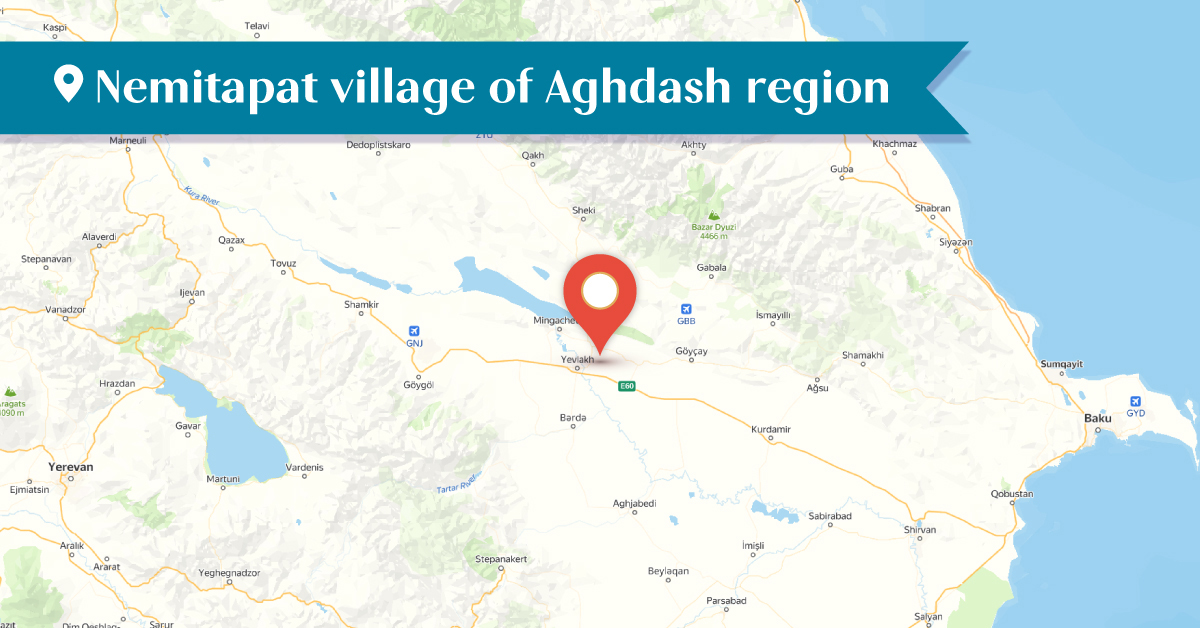2025
2025
2025-02-24

The village of Nemitapat (Neymetapat) in the Aghdash district was located about 18 km west of the district center of the same name. In the 19th century, there were two villages with the same name in the Arash region—one Armenian and one Tatar. The village was also known as Hayi (Armenian) Nemitapat and Mammadabad. The Armenian Nemitapat village was surrounded by Tatar settlements and was isolated from other Armenian-populated villages in the region.
In 1839, the village of Nemitapat had 26 Armenian households, and by 1853, the population had grown to 241. In 1914, Nemitapat was entirely Armenian-populated and had 609 inhabitants.
The population of Nemitapat village suffered greatly during the 1918 attacks by Turkish forces and Musavatists. However, the surviving villagers returned and rebuilt their settlement. Until 1954, an Armenian school operated in the village, and in that year, the village had around 70 Armenian households. After 1954, the population relocated to the Armenian SSR, settling in the Nor Aresh district of Yerevan. By 1988, when the village was already inhabited by Azerbaijanis, only one Armenian family remained.
The village of Nemitapat had a church called Surb Astvatsatsin, which has not been preserved. In 1987, during a visit by historian and monument specialist Samvel Karapetyan, numerous tombstones with Armenian inscriptions from the 19th century were still present in the cemetery surrounding the church. Karapetyan published the inscription from the tombstone of Stepan Ter-Zakaryants, a physician from Meghri.
This is the grave of the prematurely dead native of Meghri,
Doctor Stepan Azat Ter-Zakaryants,
Born on August 10, 1860,
Passed away in 1889 at the age of 29.
After graduating from the Tiflis Real School,
He entered the Medical University of Paris on March 10, 1881,
Graduated in 1886 and received...
In 1889, he returned to his brothers in Aghdash...
Passed away and was buried in the village of Mamatapat.
The village is now called Neymetabad and is inhabited by Azerbaijanis.
Bibliography
Barkhutaryants M., Land of Aghvank and its Neighbors: Artsakh, Yerevan, 1999.
Karapetyan S., The Armenian Lapidary Inscriptions of Aghvank Proper, Yerevan, 1997.
Karapetyan, S., Aghvank Proper, Part 1, Yerevan, 2024.